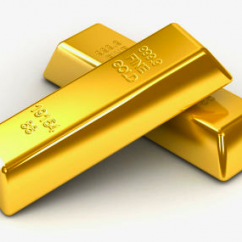Articles and News
METALS 2013: LOOK FOR HIGHER GOLD PRICES AGAIN; MORE MINE STRIKES PLAGUE PLATINUM | January 16, 2013 (0 comments)

Toronto, Canada—Investment demand is forecast to drive gold prices higher in first half of 2013, owing to loose monetary policies and burgeoning sovereign debt.
That’s the view of Thomson Reuters GFMS, the London-based consultancy that on Wednesday launched its latest report on the gold market. Philip Klapwijk, global head of metals analytics at Thomson Reuters GFMS, gave a briefing of GFMS’ initial estimates of the market’s fundamentals ahead of its Gold Survey 2013 in April.
His predictions for the first half of this year contradicted beliefs that the long bull market for gold may be over. In fact, the consultancy is forecasting gold to average an all-time high in the first half of the year, and any recovery drops in price will still leave it well into the $1,800s. (At press time, it was trading at $1,682/oz.)
Despite the sell off in the fourth quarter of last year, Thomson Reuters GFMS believes many of the factors that have underpinned gold’s bull run will continue.
Said Klapwijk in the presentation, “Although there is now growing speculation around the structure and longevity of the Fed’s QE program, policies of ultra-low interest rates across the western economies will persist in 2013. This will continue to support investor interest in gold in the absence of low risk investments that can offer acceptable yields.”
Jewelry demand was resilient, he said—it fell only 4% last year, all due to weakening demand in India and China. Global scrap fell 2% despite a 6% price increase. Gold investment swelled to record levels in dollar terms last year, to an approximate $87 billion. Mine production growth was constrained last year—and saw unrest at a number of mines—but it still remains at record levels.
Thomson Reuters GFMS forecasts that world investment in gold will rise 20% in volume and 30% in value compared to the first half of 2012. The key drivers remain concerns over economic growth in the major economies, its impact on central banks’ monetary policies, and investor worry over sovereign debt levels.
Not all gold experts believe a hike is inevitable right now, though. Andrew Waldock of Ohio-based Commodity and Derivative Advisors, thinks it's not yet time for gold to shine; indeed, it may dip down, he said. But fiscal dithering on the part of the U.S. government could be a driver for higher gold, as any legislative fiasco could undermine markets' faith in the United States and drive the dollar down--which means gold shoots up.
Read the full GFMS report here.
Separately, Johnson Matthey’s Platinum Interim Review report, released in late 2012, forecasted a deficit of 40,000 oz for the year, owing largely to mine unrest in South Africa combined with a decline in recycling, but demand holding steady. The metals producer predicts automotive demand for the metal will decrease slightly but jewelry demand will rise to a three-year high of 2.73 million ounces, largely driven by demand from China.
For 2013, both platinum and palladium are expected to see relatively steady demand but uncertain growth in supply, which may push prices upward. Labor unrest at platinum mines in South Africa—albeit at great cost to human life—did successfully result in increased wages for miners on top of gains agreed upon through normal channels. But the added concessions put tremendous pressure on miners’ margins and few mines are operating profitably for the long term, suggesting we may see both closures and consolidations of mines, further limiting supply.
Indeed, workers at Anglo American Platinum (Amplats) went out on strike Wednesday following an announcement that the producer plans to close four shafts in South Africa and shed 14,000 jobs.
Johnson Matthey does not see platinum supplies rising substantially, but acknowledges that depending on prices, there may be an increase in recycled platinum.
Prospects for industrial demand for 2013 are slightly improved over 2012, and demand for jewelry is also expected to increase, driven by China and Hong Kong. But the volatility of platinum price, coupled with competition from gold—a more traditional metal in those markets—and the general level of consumer confidence is likely to be an issue.
Palladium supplies, meanwhile, are expected to fall in 2013 with diminished output from Russia. This is likely to impact industrial use more than jewelry, which JM predicts is likely to be robust in North America and Europe owing to its growing niche in men’s jewelry.
At press time, platinum was trading at $1678/oz., slightly below gold. Palladium was trading at $724/oz, and rhodium, used for industrial applications but also to plate white gold jewelry, was trading at $1,225/oz.







